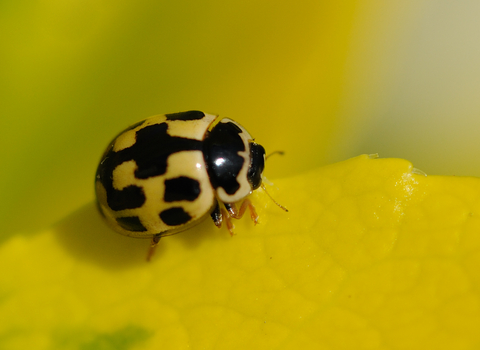
14-spot Ladybird ©Amy Lewis
14-spot ladybird
The 14-spot ladybird is one of three yellow ladybirds in the UK. Look for it in grassland, woodland and gardens. Ladybirds are beneficial insects, managing garden pests - encourage them by putting up a bug box.
